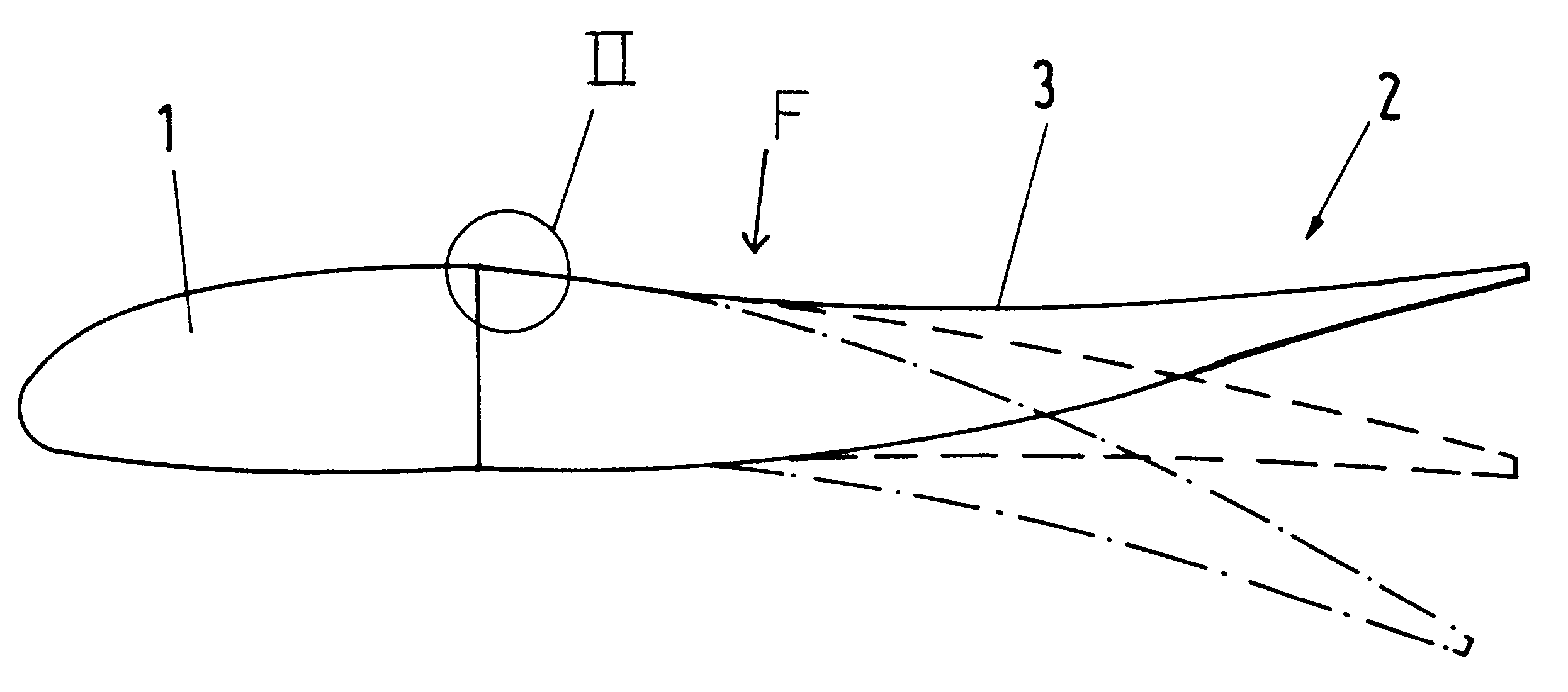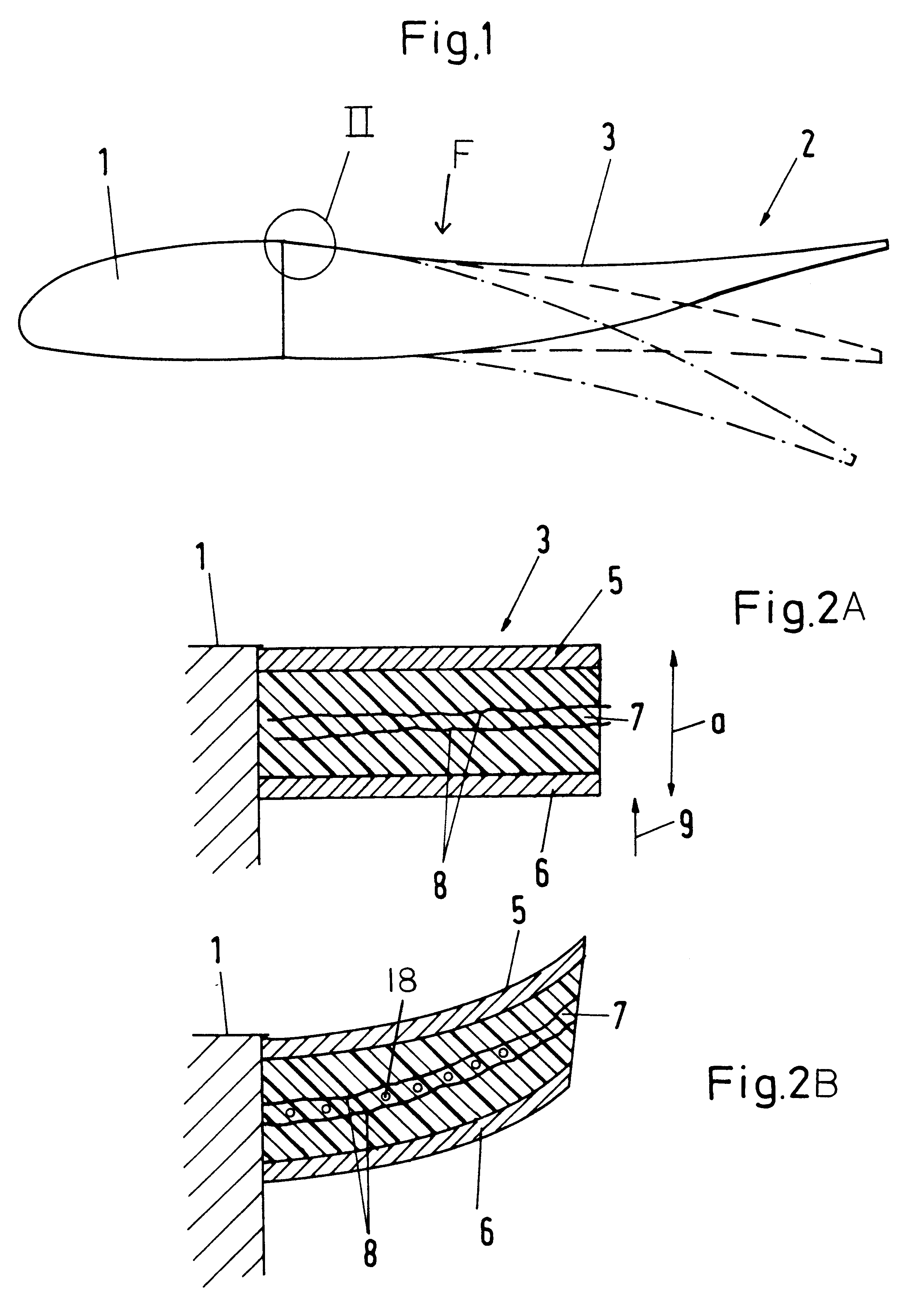Load carrying structure having variable flexibility
a load carrying structure and variable flexibility technology, applied in the direction of marine propulsion, vessel parts, vessel construction, etc., can solve the problems of large total number of components interacting in rather complicated ways, complicated joint members and locking devices,
- Summary
- Abstract
- Description
- Claims
- Application Information
AI Technical Summary
Benefits of technology
Problems solved by technology
Method used
Image
Examples
Embodiment Construction
As shown in FIG. 1, the landing flap F of an aircraft wing comprises a forward portion 1 and a trailing edge portion 2 joined onto the forward portion in an aerodynamically streamlined manner. While the forward portion 1 may be substantially rigid, it is desired that the trailing edge portion 2 should be selectively flexibly deflectable both upward and downward relative to the forward portion. To achieve this, the trailing edge portion 2 comprises a cover skin 3 that is secured to the forward portion 1 at the upper surface of the flap F. The bottom cover skin of the trailing edge portion 2 may or may not be fixedly connected to the forward portion 1 so as to respectively form a rigid connection between the two portions 1 and 2 or a selectively flexible hinge joint connection between the two portions 1 and 2 in the detail area II, as desired.
In any event, the trailing edge portion 2 is so constructed that it can be bendingly or flexibly deflected between a maximum upward deflected po...
PUM
 Login to View More
Login to View More Abstract
Description
Claims
Application Information
 Login to View More
Login to View More - R&D
- Intellectual Property
- Life Sciences
- Materials
- Tech Scout
- Unparalleled Data Quality
- Higher Quality Content
- 60% Fewer Hallucinations
Browse by: Latest US Patents, China's latest patents, Technical Efficacy Thesaurus, Application Domain, Technology Topic, Popular Technical Reports.
© 2025 PatSnap. All rights reserved.Legal|Privacy policy|Modern Slavery Act Transparency Statement|Sitemap|About US| Contact US: help@patsnap.com


